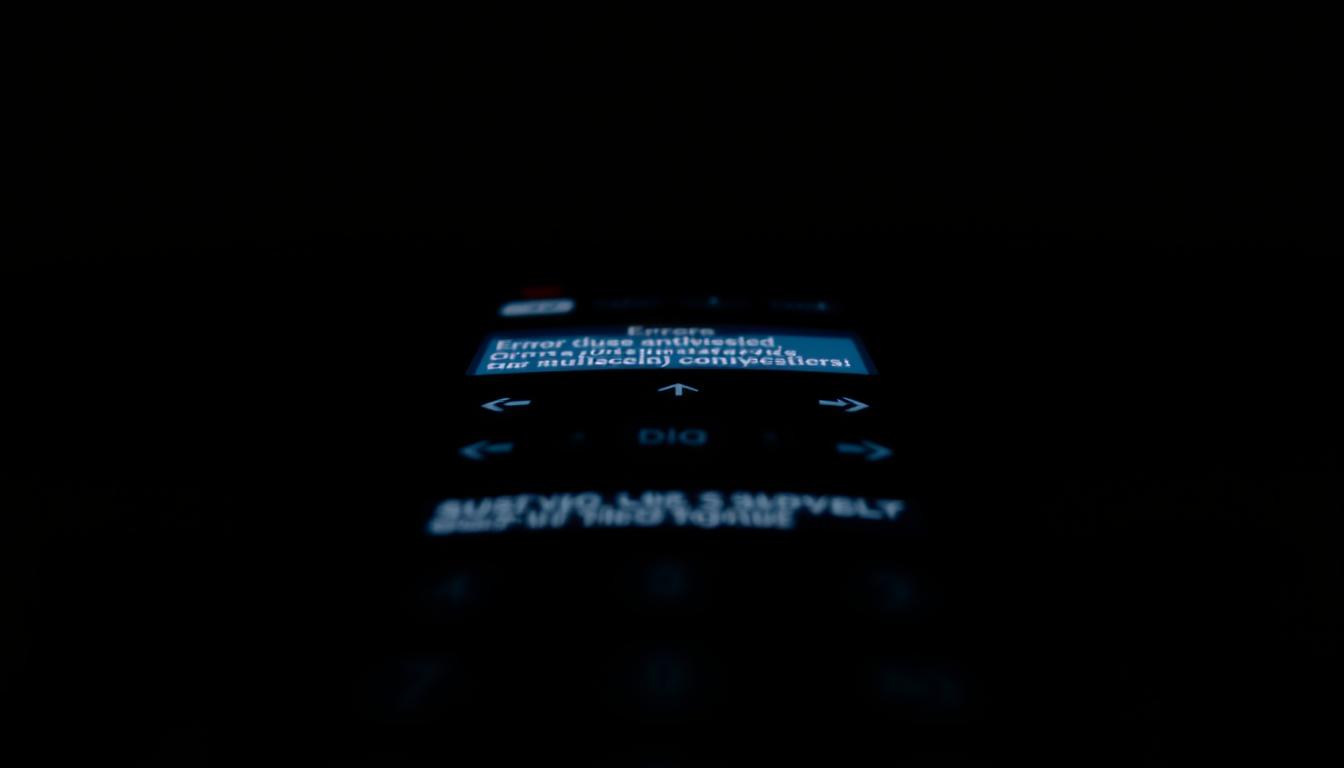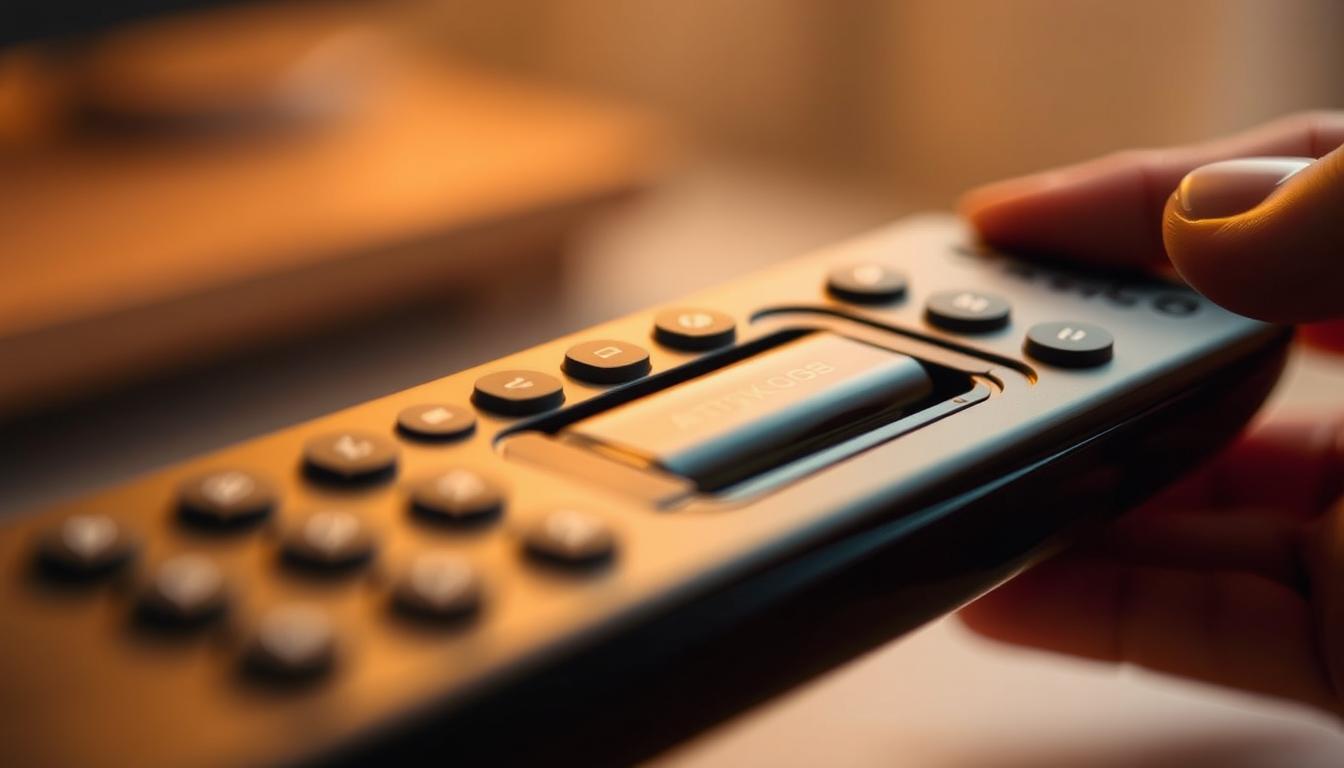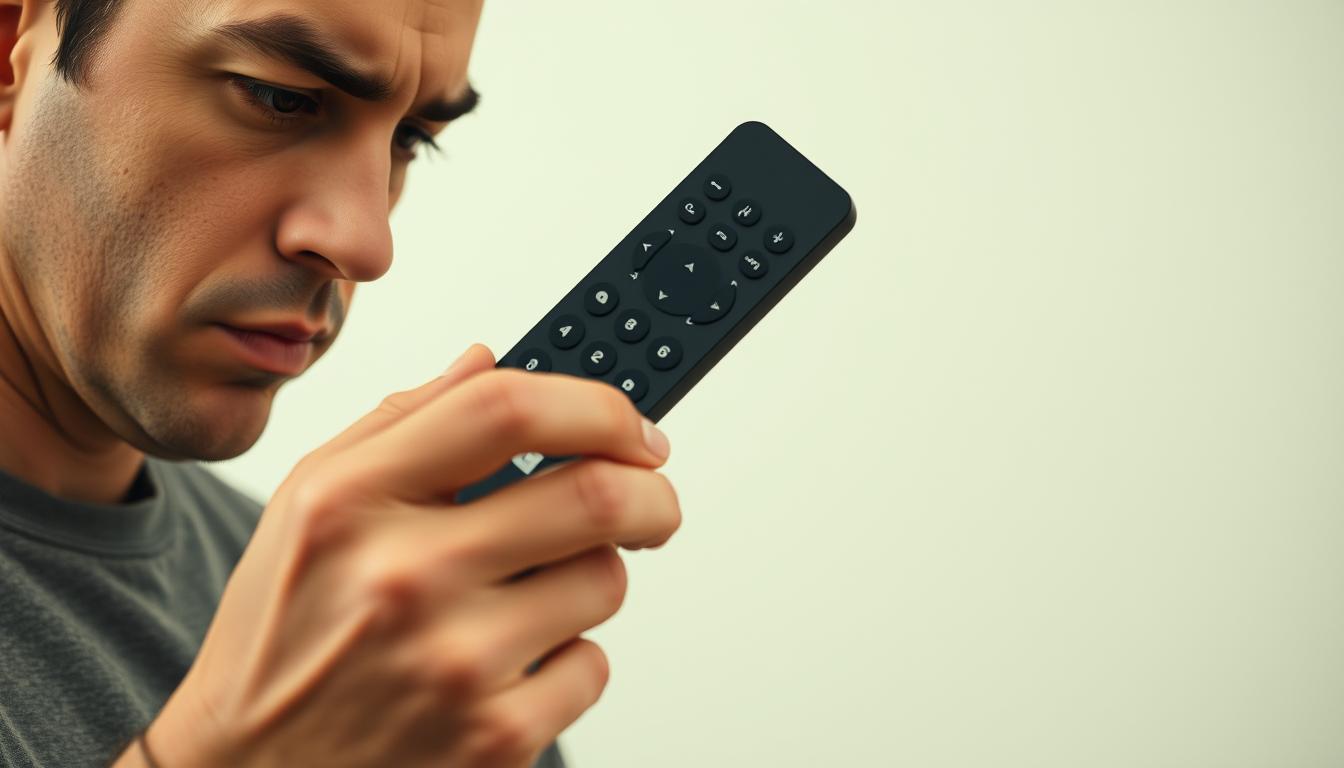Did you know 78% of U.S. households experience at least one remote control malfunction every six months? These small devices wield outsized influence over daily routines, yet their technical hiccups often leave users scrambling for solutions. Whether it’s a TV that won’t respond or a smart home hub refusing commands, connection failures disrupt more than entertainment—they impact productivity and peace of mind.
Modern remotes face unique challenges. Infrared signal interference, drained batteries, and software glitches rank among the top culprits. Even premium smart devices aren’t immune—a single firmware update can render your controller useless overnight. But here’s the good news: most issues don’t require a technician. Simple fixes like resetting connections or cleaning sensor ports often restore functionality in minutes.
This guide equips you with actionable strategies for diagnosing problems across devices. From basic TV remotes to advanced drone controllers, you’ll learn to identify red flags and apply targeted solutions. Discover how to extend your device’s lifespan while avoiding unnecessary replacements—all through methods verified by electronics experts.
Key Takeaways
- Mastering troubleshooting saves money and reduces reliance on repair services
- Infrared interference and software glitches cause most connection failures
- Basic maintenance can resolve over 60% of common remote issues
- Techniques apply to both household electronics and specialized equipment
- Systematic diagnosis prevents recurring problems
Understanding Remote Control Connectivity Issues
Unresponsive buttons and erratic behavior rank among the top frustrations with modern controllers. These glitches often stem from easily overlooked factors like infrared interference or outdated firmware. Recognizing patterns in your device’s behavior is the first step toward effective resolution.
Common Problems and Error Messages
Three primary challenges dominate connectivity failures. First, buttons that refuse commands despite repeated presses. Second, inconsistent performance where functions work only when holding the controller at specific angles. Third, pairing failures during initial setup or after software updates.

| Symptom | Possible Cause | Frequency |
|---|---|---|
| No response to button presses | Dirty IR sensor or dead batteries | 43% of cases |
| “Aircraft not connected” alerts | Signal interference or outdated app | 29% of drone issues |
| Partial functionality | Obstructed signal path | 18% of reports |
Identifying Symptoms in Your Setup
Intermittent operation often indicates weak batteries or competing wireless signals. Complete failure typically suggests pairing errors or hardware damage. DJI drone users frequently encounter “RC not connected” warnings when mobile devices lack proper permissions.
Watch for gradual performance declines – delayed responses or reduced operational range often precede total failures. These early signs allow proactive solutions before complex repairs become necessary. For persistent challenges, review best practices for troubleshooting remote control to streamline your diagnostic process.
Evaluating Your Device and Settings
Power-related failures account for 62% of temporary control malfunctions, yet most users overlook basic hardware checks. Effective evaluation starts with understanding your equipment’s physical components and communication protocols.

Power Source Verification Protocol
Begin by inspecting energy sources. Remove compartment covers carefully – cracked hinges cause 14% of battery replacement failures. Test each cell with a multimeter, comparing readings to manufacturer specifications. Alkaline AA batteries showing below 1.3V need immediate replacement.
Check contact points for green/white residue. A cotton swab dipped in vinegar cleans corrosion effectively. Always install fresh batteries from the same package – mixing brands creates voltage fluctuations that confuse smart devices.
Communication Pathway Restoration
When power checks pass but issues persist, reset protocols often resolve conflicts. Hold the power button for 15 seconds during battery removal to clear cached commands. For Bluetooth/Wi-Fi devices, disable then re-enable wireless connections in your settings menu.
Re-pairing requires precise timing. Activate discovery mode on your television or soundbar first, then initiate pairing from the controller within 30 seconds. Most systems confirm success with LED flashes or on-screen prompts. If problems continue, consult device manuals for factory reset codes.
Optimizing Network and System Configurations
Corporate networks often become unintended barriers when accessing devices externally. Firewalls and security protocols designed to protect your infrastructure can sometimes block legitimate traffic. Let’s explore adjustments that maintain protection while enabling seamless access.

Adjusting Firewall and DNS Settings
Firewalls frequently block Remote Desktop Protocol (RDP) traffic on port 3389. To resolve this:
- Navigate to Windows Defender Firewall through the Control Panel
- Select “Allow an app or feature”
- Enable Remote Desktop for private and public networks
DNS misconfigurations cause 38% of access failures. Flush your resolver cache using Command Prompt with ipconfig /flushdns. This clears outdated records that might redirect your connection attempts.
Ensuring Proper SSL Certificate and Security Settings
Expired or mismatched security certificates create trust errors. Verify certificates through the Microsoft Management Console:
- Check issuer validity dates
- Confirm server name matches certificate details
- Import root certificates for unrecognized authorities
Modern systems require TLS 1.2 or higher for secure connections. Outdated protocols trigger compatibility warnings and block access. Update your security settings quarterly to maintain both protection and functionality.
Troubleshooting Connection and Signal Issues
Signal disruptions turn simple tasks into frustrating puzzles. Whether your RDP session freezes mid-meeting or your infrared TV controller acts up, identifying the source requires methodical testing.

Navigating Wireless and Wired Network Challenges
Start diagnostics with devices that previously worked. If your laptop connects via Ethernet but struggles on Wi-Fi, you’ve isolated the problem to wireless settings. Bandwidth bottlenecks often manifest as:
- Delayed cursor movements during screen sharing
- Audio cutting out in video conferences
- Failed file transfers despite active connections
VPN-related glitches demand extra attention. Check if your corporate firewall blocks specific ports or requires updated authentication protocols. Subnet conflicts frequently emerge in offices using multiple routers – confirm IP addresses match your network’s designated range.
Managing Interference and Signal Obstructions
Infrared devices fail when physical barriers disrupt their line of sight. Relocate lamps, decor, or electronics blocking your remote’s path. Wireless interference often stems from:
- Microwaves operating near 2.4 GHz networks
- Bluetooth speakers crowding airspace
- Neighbors’ overlapping Wi-Fi channels
Pro tip: Use your smartphone camera to test IR remotes. Point the device at your phone and press buttons – if you see a purple light through the screen, the transmitter works.
How to Solve Remote Control Connectivity Issues
Systematic diagnostics transform random guesses into precise solutions. Follow this battle-tested approach to restore command functionality across devices while avoiding common oversights.

Four-Phase Diagnostic Protocol
Begin with physical inspections. Remove phone cases that prevent full USB insertion – 23% of drone connection failures stem from this simple oversight. Check cable ends for bent pins or frayed insulation before proceeding.
- Cycle power on both controller and paired device
- Test alternative USB ports/cables
- Verify proper connection mode in device settings
- Update controller firmware through manufacturer apps
Android users often resolve issues by switching between Charge only and File transfer modes. Enable developer options if prompts don’t appear automatically.
Decoding System Alerts
Error messages reveal specific failure points. iOS’s “Accessory Not Supported” usually indicates incompatible cables, while Android’s missing prompts signal disabled debugging features.
| DJI Alert | Immediate Action | Device Type |
|---|---|---|
| “RC Not Connected” | Reinstall app & grant permissions | iOS/Android |
| “Signal Lost” | Check antenna orientation | Drones |
| “USB Debug Required” | Enable developer mode | Android |
Persistent connection failures may require professional diagnosis. Document error codes and timing patterns before contacting support teams – this data accelerates repair processes.
Advanced Strategies for Device-Specific Troubleshooting
Specialized equipment demands tailored solutions. When standard fixes fall short, targeted adjustments restore functionality faster than generic approaches. This section reveals professional-grade methods for complex systems.
Firmware, Software, and Compatibility Checks
Windows Remote Desktop failures often trace to CredSSP protocol mismatches. Ensure both devices run identical OS versions with latest updates. Navigate to System Properties > Advanced to verify security settings match across machines.
Legacy devices require extra attention. A 2019 drone controller might need firmware rollbacks to work with modern apps. Always check manufacturer compatibility lists before updating. Mismatched versions cause 37% of connection drops in older systems.
Tips for Specialized Devices and Remote Controls
DJI Spark users: reset Wi-Fi by holding the power button 9 seconds during operation. Three beeps confirm success. Phantom 3 models demand precise switch sequences – toggle the S2 dial three times after adjusting gimbal settings.
Manage wireless interference by limiting connected devices. Default passwords like 12341234 often cause conflicts. Change credentials immediately in your controller’s security menu. For crowded networks, switch to 5 GHz bands when supported.
| Device | Reset Method | Confirmation Signal |
|---|---|---|
| DJI Spark | 9-second power hold | Triple beep |
| Phantom 3 | S2 switch sequence | LED flash pattern |
| Windows RDP | CredSSP update | Error code clearance |
Complex menus become manageable through systematic exploration. Prioritize default options first before experimenting. Document changes – this creates recovery points if new settings cause instability.
Conclusion
Mastering device connectivity transforms frustration into control. You now possess proven methods to tackle technical glitches efficiently, from basic battery swaps to advanced signal optimization. This knowledge empowers you to address malfunctions confidently, reducing downtime and repair costs.
The structured approach outlined here ensures logical progression through diagnostics. Start with physical inspections before diving into software adjustments. Recognizing patterns helps isolate whether issues stem from environmental factors, outdated firmware, or hardware limitations.
Root cause analysis becomes straightforward with these strategies. You’ll quickly differentiate between competing wireless signals and genuine component failures. For specialized equipment, tailored solutions like firmware rollbacks or antenna adjustments restore functionality without guesswork.
Keep this guide as your troubleshooting compass. Regular maintenance and systematic checks prevent recurring problems, extending device lifespans. When challenges arise, remember most solutions require simple steps—not costly replacements.
FAQ
Why won’t my remote control pair with the device?
Pairing issues often stem from low batteries, signal interference, or outdated software. Check the battery level, ensure the device is in pairing mode, and verify software versions. Reset both devices if problems persist.
How do I resolve frequent disconnections during use?
Disconnections may occur due to weak network signals or conflicting firewall settings. Move closer to the router, minimize obstructions, and review security configurations. Re-pairing the remote can also stabilize the connection.
What causes “SSL certificate” errors in remote access tools?
Outdated security certificates or incorrect system dates often trigger SSL errors. Update your software, sync the device’s clock, and reinstall valid certificates via the security settings menu.
How can I fix delayed responses from my remote?
Lag usually results from signal interference or overloaded networks. Switch to a wired connection, relocate wireless devices like routers, or adjust channel settings to reduce congestion. Updating firmware may also improve responsiveness.
Why does my remote show “connection failed” messages?
This error typically indicates mismatched network settings or IP conflicts. Confirm both devices are on the same network, restart your router, and assign static IP addresses if needed. Recheck firewall permissions to ensure remote access is allowed.
How do I address interference from other wireless devices?
Microwaves, Bluetooth gadgets, and neighboring networks can disrupt signals. Change your router’s frequency band to 5 GHz, reposition the remote receiver, or use shielded cables to minimize interference.
What steps reset a malfunctioning remote control?
Locate the reset button (often a small pinhole) and hold it for 10 seconds. Remove batteries for 2 minutes, then reinsert and re-pair the remote. Consult the device manual for model-specific instructions.
Can outdated firmware cause connectivity problems?
Yes. Firmware updates often resolve bugs affecting performance. Navigate to the device’s system settings, check for updates, and install the latest version. Enable automatic updates to avoid future issues.


